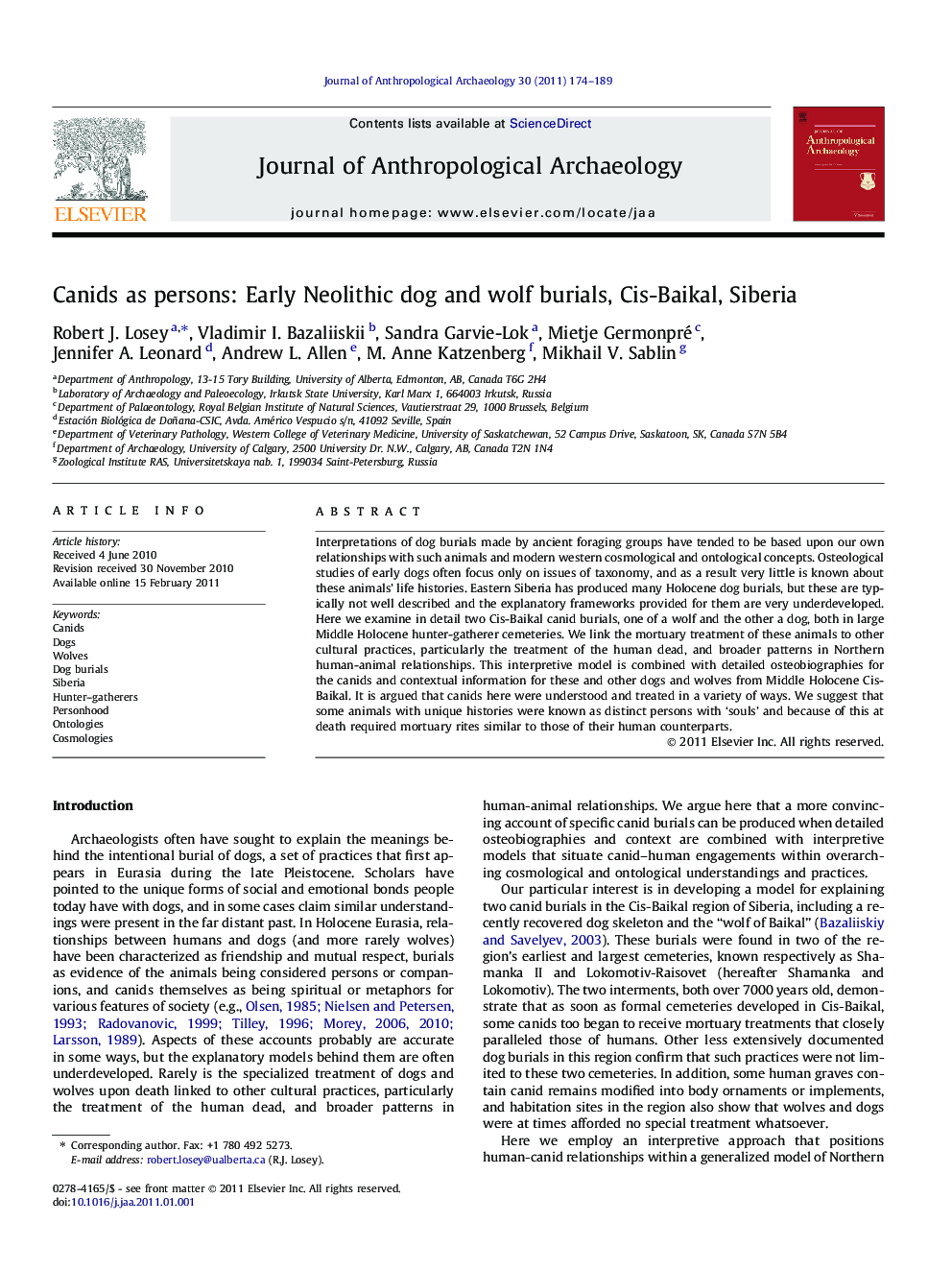| Article ID | Journal | Published Year | Pages | File Type |
|---|---|---|---|---|
| 1035068 | Journal of Anthropological Archaeology | 2011 | 16 Pages |
Interpretations of dog burials made by ancient foraging groups have tended to be based upon our own relationships with such animals and modern western cosmological and ontological concepts. Osteological studies of early dogs often focus only on issues of taxonomy, and as a result very little is known about these animals’ life histories. Eastern Siberia has produced many Holocene dog burials, but these are typically not well described and the explanatory frameworks provided for them are very underdeveloped. Here we examine in detail two Cis-Baikal canid burials, one of a wolf and the other a dog, both in large Middle Holocene hunter-gatherer cemeteries. We link the mortuary treatment of these animals to other cultural practices, particularly the treatment of the human dead, and broader patterns in Northern human-animal relationships. This interpretive model is combined with detailed osteobiographies for the canids and contextual information for these and other dogs and wolves from Middle Holocene Cis-Baikal. It is argued that canids here were understood and treated in a variety of ways. We suggest that some animals with unique histories were known as distinct persons with ‘souls’ and because of this at death required mortuary rites similar to those of their human counterparts.
Graphical abstractFigure optionsDownload full-size imageDownload high-quality image (124 K)Download as PowerPoint slideResearch highlights► Two early Siberian canid burials are analyzed from the perspectives of Northern ontologies and cosmologies. ► Some canids from the study area were buried as persons, while others were not distinctly treated. ► Osteology, ancient DNA, and stable isotopes indicate one buried canid is a wolf, the other a dog. ► The dog was perhaps used as a burden animal and had a diet like its human counterparts. ► The wolf was involved with humans only at death, but was buried with a human head.
